The Seven Art Principles are the building methods of the visual arts. "Whether we work intuitively or consciously, we plan, use, and control the Principles of Art when we create an artwork" The Art Elements are therefore the "ingredients" of the artwork. An artwork can consist of one or more of the Principles in infinite combinations and variations. *Text adapted from: Herberholz B & D: ARTWORKS FOR ELEMENTARY TEACHERS. 2002 |
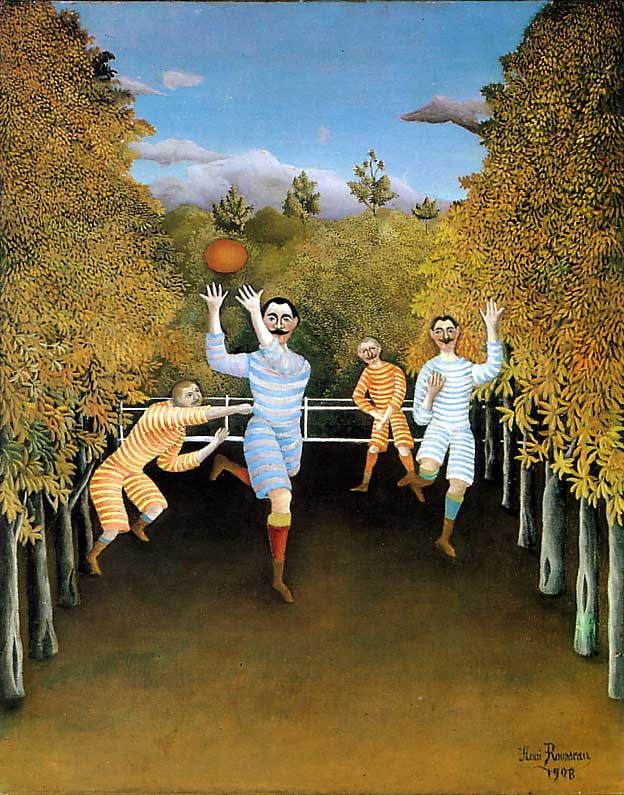 Henri Rousseau, The Football Players, 1908
 Andy Warhol, Marylin, 1967
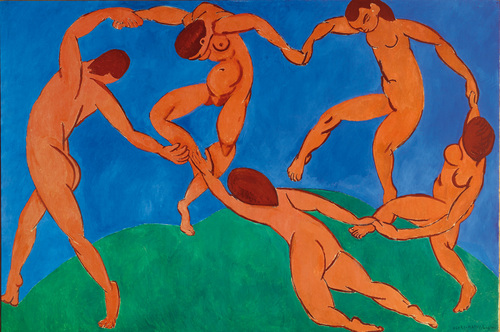 Henri Matisse, Dance, 1909
 Amedeo Modigliani, Jeanne Hébuterne, 1918
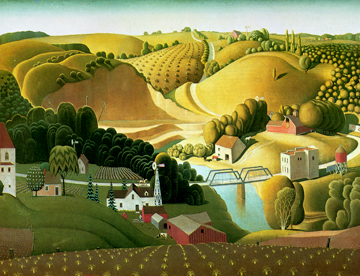 Grant Wood, Stone City, Iowa, 1930
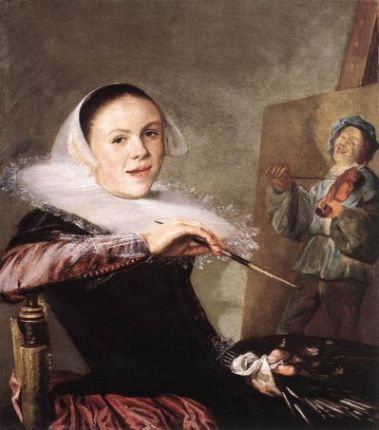 Judith Leyster, Self-portrait, 1635
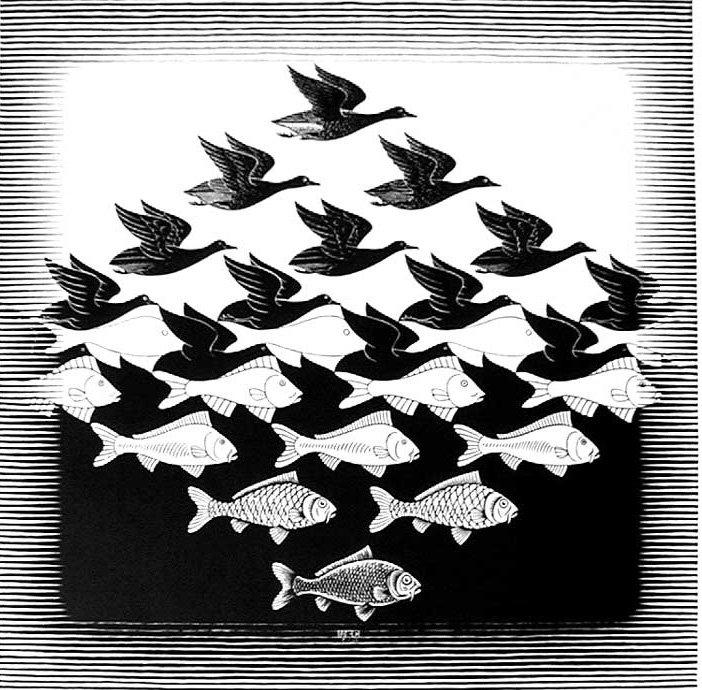 M. C. Escher, Sky and Water, 1938 |
1. Balance Is more a visual feeling of weight then the actual quality of being heavy or light. Balance is achieved when no one portion of an artwork seems too heavy visually or overpowers any other parts. An imbalanced artwork creates an uneasy sense in the viewer - something is "off".
Repetition in the world of nature and in artworks forms Rhythms and Patterns. Rhythm is a regular or harmonious pattern created by the repetition of lines, shapes and colors. Patterns can visually enhance artworks and provide visual interest and focus.
3. Movement Without movement there is no life. Our eyes are attracted to moving things. In an artwork movement can be simulated to create the illusion of something moving. Or movement can be real, like in sculpture, where parts of the work can actually move. Artists use combinations of the different art elements to cause the viewer's eyes to move over the composition in a particular manner.
Are the relationships between the different parts of an artwork or between the whole and its parts. It has to do with size, and also with color or texture. Proportions can be exaggerated, or distorted from what we consider 'normal proportions', or may aim at pleasing our sense of what is 'right'.
5. Variety Our eyes, taste buds, and ears like variety and seek it out. This art principle deals with differences and contrasting elements which enliven and spice-up an artwork. Too much variety creates a feeling of chaos - mess, whereas no variety may cause boredom...
6. Emphasis What caches your eye when you first look at an artwork? Emphasis directs and centers our attention on one significant part of an artwork. It creates a focal point or a center of attention.
7. Unity & Harmony Is the art principle that makes all separate elements of an artwork look as they belong together. The elements blend together harmoniously and one knows that nothing should be changed, added, taken away or moved.
|